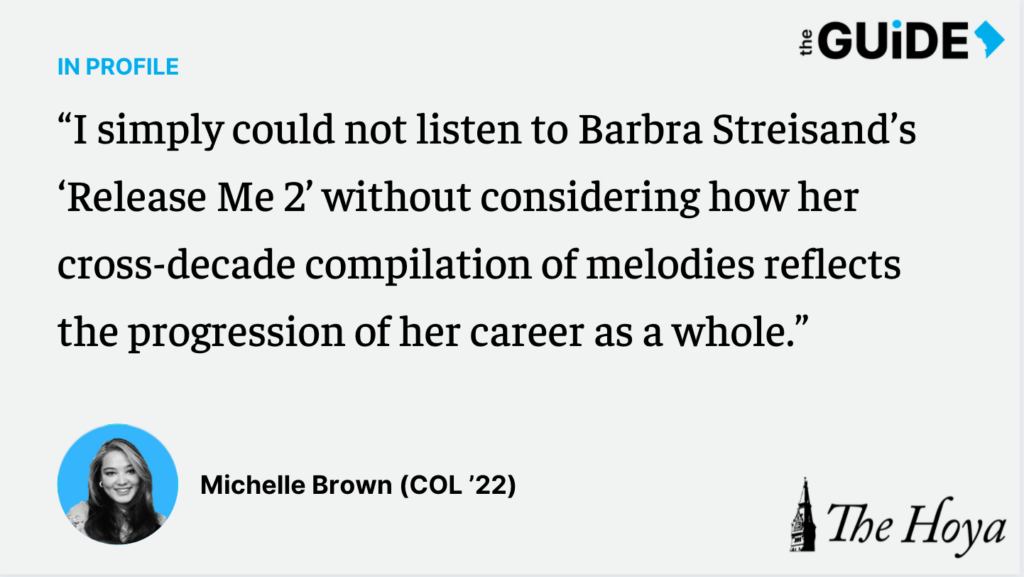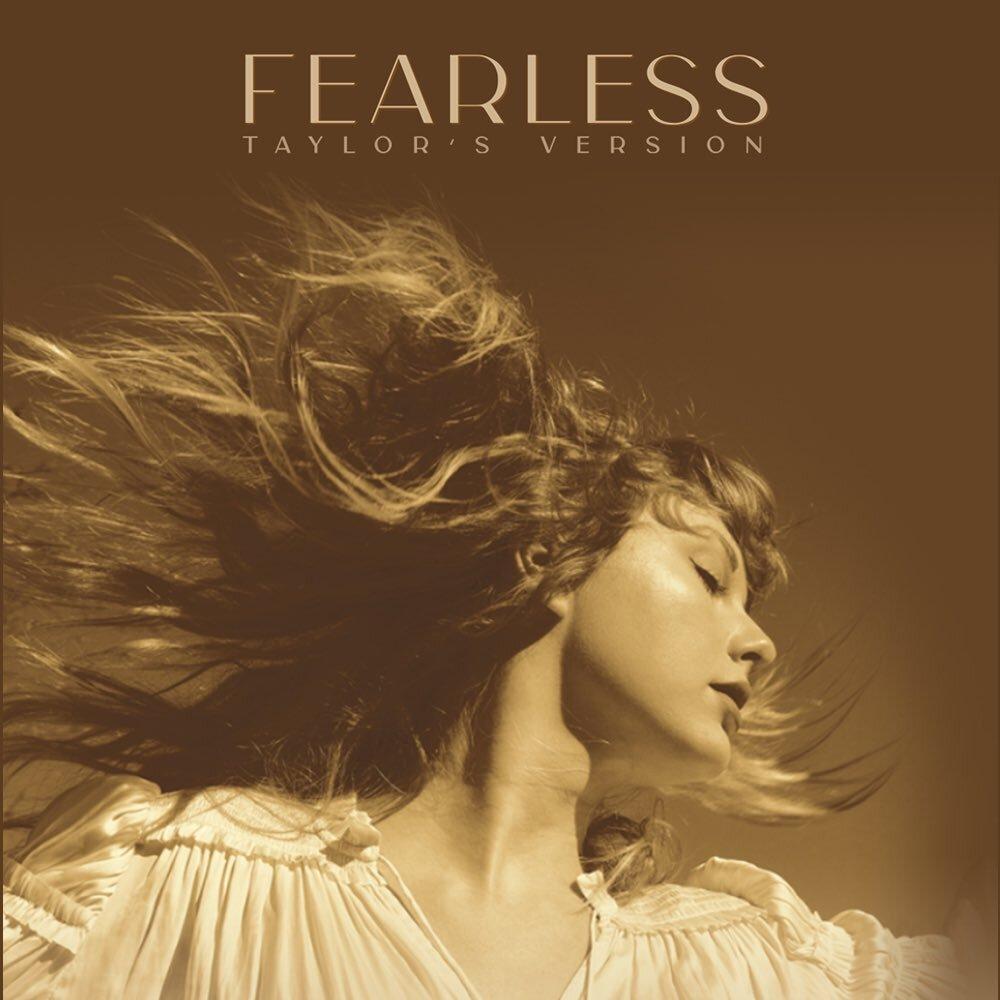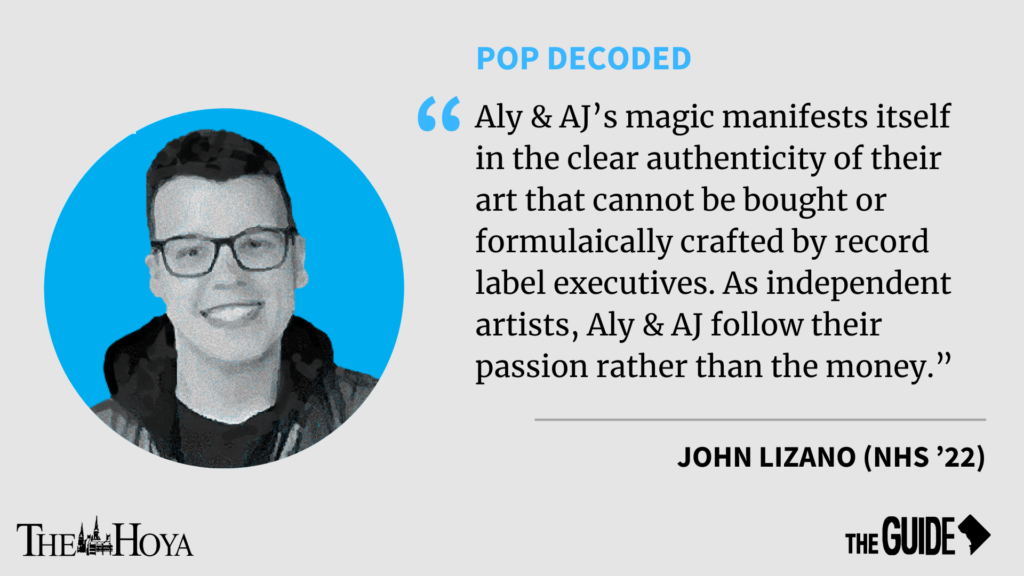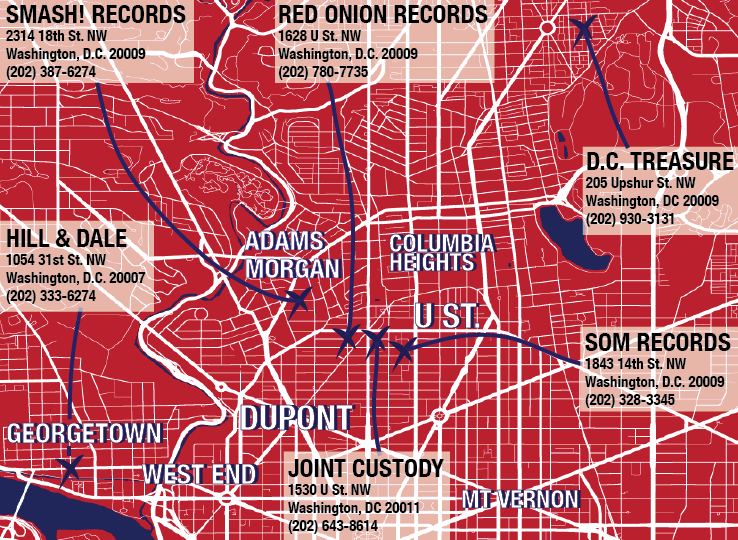
As subscription streaming services continue to command a growing share of the global music market, the comeback of another medium is putting a new spin on how people listen to music. In Georgetown and the wider D.C. community, audiophiles are returning to the once-abandoned format of vinyl records.
LPs were the primary format of music distribution from the 1950s until they were overtaken by CDs in the early 1990s. As the dominant form of music consumption drifts from physical ownership to digital streaming, a special kind of consumer has brought the analog format back to its highest sales level since the late 1980s.
With vinyl sales projected to reach $1 billion in 2017 according to Forbes magazine, vinyl can now be found everywhere from dedicated record stores, such as Smash! Records in Adams Morgan and Georgetown’s own Hill & Dale, to chain retailers, including Urban Outfitters, Barnes & Noble and Guitar Center.
The latter group of national retailers has not only responded to increased vinyl sales but is also helping to drive the trend, according to Michael White (COL ’19), events director of WGTB, Georgetown’s radio station.
“One factor of vinyl’s new popularity is that brands with a cultural impact, like Urban Outfitters, have decided that it’s cool again,” White said.
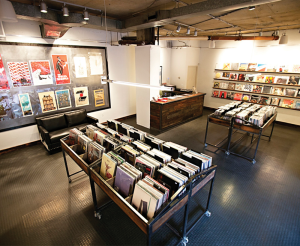
Hill & Dale, located in Georgetown, has been driving the comeback of the vinyl medium in the name of an all-encompassing listening experience.
Vinyl owes its comeback to more than trendsetting retailers. For many, the experience of owning and listening to analog records is an attractive alternative to streaming. Benjamin Harbert, assistant professor of music in the department of performing arts, values vinyl’s ability to pull listeners away from constantly plugging in to personal devices to enjoy their music actively.
“There are times when it feels good to put a record on, in the same way it feels good to read a book and be unplugged,” Harbert said.
Another factor contributing to vinyl’s appeal is the aspect of ownership. While paying $9.99 per month for unlimited access to millions of songs may be sensible from a financial perspective, physical ownership results in a far more personal connection among listener, artist and media.
“You’re getting a physical piece with artwork that you can take a look at. When you put the record on a turntable, you listen to it in the sequence the artist intended,” Hill & Dale owner Rob Norton said.
Nostalgic consumers are not the only ones who are driving the comeback of the retro medium. Vinyl has potential extending far beyond a sentimental attachment to aesthetics of the past: Many contemporary artists are releasing new music on the format and reissued pressings continue to give old releases new life. Although hunting for records may seem like the nostalgic pursuit of a bygone generation, consumers of all ages are embracing vinyl anew.
“We get teenagers, we get old men — it’s all over the place, which is great. It’s how we like it to be,” Smash! Records employee Matthew Moffatt said.
Steadily gaining a greater market share since 2009, vinyl sales have grown 260 percent since 2009, according to a 2015 Nielsen report. The younger generation of collectors is making it clear there is more to the vinyl revival than nostalgia.
“For a lot of our younger customers, there is nothing to be nostalgic about,” Norton said.
Vinyl, as an all-encompassing listening experience, continues to draw many away from the impersonal convenience of online streaming. Whereas streaming services result in a dematerialization of music, turning recorded sound waves into a binary signal of ones and zeros, vinyl celebrates music in its material form.
“The advantage of owning a physical copy is that I’ll leaf through and stumble across it. There are things I’ve listened to on streaming I’ll never listen to again, or that I think about but can’t remember the name. Streaming is more ephemeral,” Harbert said.
Similarly, digital music — and iTunes in particular — has placed an emphasis on individual tracks, yet the analog form encourages greater, holistic exploration of the album and artist.
“Digitally, if someone mentions a track to you, you just go play it right away. But you just listen to that track. You don’t listen to anything else by the artist, because you don’t have to,” Norton said.
Since its inauguration in 2007, Record Store Day has celebrated independent record stores, labels and the LP format. An annual event held one Saturday each April, Record Store Day is now celebrated by thousands of fans, artists and record stores worldwide.
“Record Store Day is usually our biggest sales day of the year, and it makes April the biggest sales month of the year. It’s kind of like rolling up the entire holiday season into one day,” Norton said.
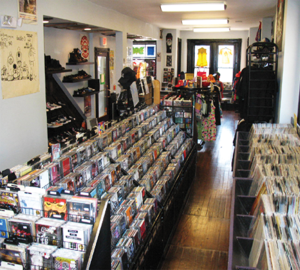
Adding to the occasion, associated labels offer limited-edition pressings to be released at select stores nationwide. Unfortunately, the popularity and expansion of the event has hurt its novelty.
“It seems like each year a little more crap is produced. The special records are getting less special — it seems,” Moffatt said.
This devaluation is particularly concerning, considering that vinyl’s special, personal qualities are central to its meaning and appeal for collectors. For many, including professor Harbert, vinyl offers the opportunity of discovery away from the “Top 40” contemporary mainstream.
“My first experience with it was digging through my parents’ collection in the basement. It was a place to discover music that wasn’t on the radio or that my friends didn’t listen to. In a sense, it was my own personal stash of cool,” Harbert said.
Although the trove of music offered by subscription services deposits an impossible amount of music at your fingertips, it is not necessarily always for the best when it comes to exploring new genres of music.
“If I gave you a hard drive with 20,000 songs on it, I’m not doing you any favors,” Harbert said. “One of the interesting things about vinyl being a physical object is that records are relics. You can be like an archaeologist and dig through the material culture of generations before and discover things. It’s really interesting to listen and ask ‘Why would somebody like this?’ and to take that question seriously.”
For all of its apparent appeal, there was a period of time between the late 1980s and mid 2000s when a “vinyl revival,” as it has come to be known, would have been almost unthinkable.
“There was a moment in the early ’90s where people were chucking them. Everything felt like it was moving in a particular direction toward digital technologies. I don’t think there were any media formats that seemed like they would make a comeback,” Harbert said.
Although many retailers have started carrying vinyl to cash in on its recent popularity, dedicated record stores like Smash! have never abandoned the format.
“We saw the decline of vinyl in the late ’80s and rode the birth of the CD, but we never abandoned vinyl. For a period, it shrunk inventory-wise, but we’ve always recognized people care about vinyl,” Moffatt said.
In general terms, there are three types of vinyl for sale: new releases, pre-owned pressings and reissued pressings of old releases. Hill & Dale does not offer pre-owned records but sells reissues and new releases in equal number.
“The reissues are sold in equal numbers to new releases, but it’s pretty close,” Norton said.
Meanwhile, Smash! records sells all three and highlights that the market for used records remains strong.
“We make our rent off of used classic rock. That is by far the easiest thing to bring in and the fastest to go,” Moffatt said.
Although the popularity of vinyl has increased dramatically over the past decade, streaming remains the format of the future. According to the International Federation of the Phonographic Industry’s 2016 State of the Industry overview, an estimated 68 million people globally pay for a music streaming subscription service. Spotify alone has 30 million paying subscribers.
“It’s certainly the future, but the number of people who enjoy analog music and who enjoy some physical product as something they can sit and touch and play, I don’t see that going away anytime soon,” Norton said.
Collecting vinyl is about much more than amassing a collection of music. A vinyl collection, in contrast to a playlist or hard drive, is innately personal and offers a clearer representation of individual music preferences.
“If people are willing to put in the effort to get physical copies, hunting them down, they must be passionate about it. You don’t collect an .MP3, you just download it,” White said.
This unparalleled convenience and access to an ever-increasing catalogue of music is difficult to scoff at: Spotify reports offering over 30 million songs, adding 20,000 new songs each day. However, streaming is a more passive experience both in relation to listening and discovery than vinyl.
“You subscribe, and then someone else is in charge of what you listen to. When you walk into a record store, you are the boss, and you get to design what you want to invest in,” Moffatt said.
For Harbert, there is something innately human about the act of collection — something that reflects our tastes more personally and offers an experience beyond the music itself.
“I think we can see ourselves in the collection. It’s like my son collecting Pokémon cards. He doesn’t know how to play the game; it’s the collecting itself that he’s excited about,” Harbert said. “There’s an aspect of tending to something that’s not just about listening. It’s very satisfying.”










